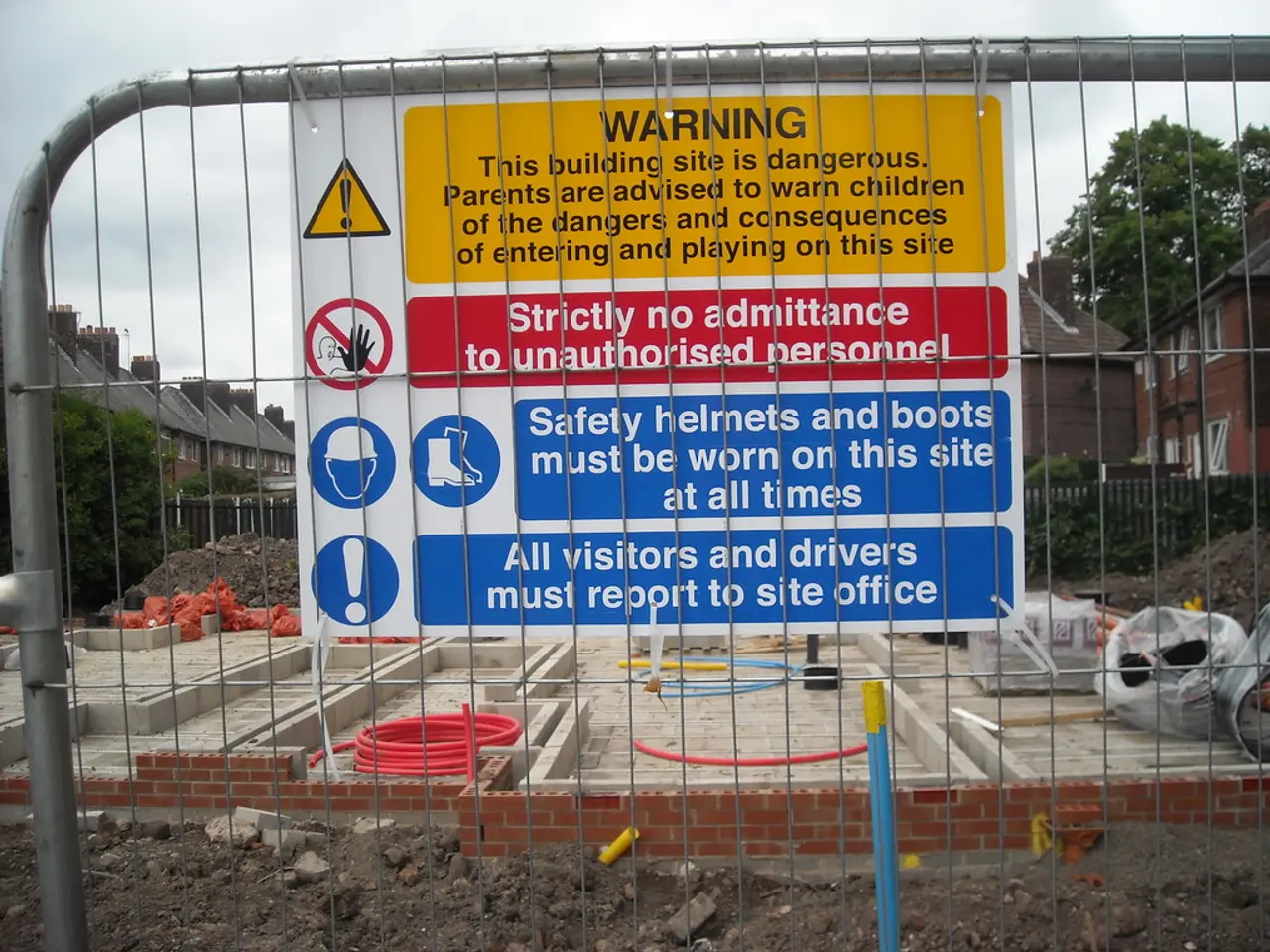Discussion of Security Measures Held in Seismic Regions, Focusing on VK
In regions prone to seismic activity, understanding how to respond during an earthquake is crucial for maximising safety. Here's a guide based on expert advice to help you navigate such situations.
During the Earthquake ---------------------
1. **Drop, Cover, and Hold On**: If indoors, drop to the ground, take cover under a sturdy piece of furniture, and hold on. If no shelter is available, crouch against an interior wall away from windows and heavy falling objects. Stay inside until the shaking stops.
2. **Outside**: Move to a clear, open space away from buildings, trees, streetlights, power lines, or any objects that can fall. Drop to the ground and stay there until the shaking ends.
3. **In a Vehicle**: Safely pull over to the side of the road, away from bridges, overpasses, signs, and power lines. Remain inside with your seatbelt fastened until the shaking stops.
4. **Avoid Hazardous Actions**: Do not run outside during shaking unless you are in immediate danger inside. Avoid elevators, stairwells, and jumps from buildings during the quake.
After the Earthquake --------------------
1. **Evacuate to Safe Zones**: Once shaking stops and if the building is unsafe or emergency protocols dictate, evacuate calmly to designated evacuation points or safe open areas that you have identified in advance, such as parks, schoolyards, or community shelters.
2. **Watch for Secondary Hazards**: Be alert for aftershocks, tsunamis if near the coast, gas leaks, power line hazards, falling debris, or flooding. Follow local official instructions and updates via radio, mobile alerts, or public announcements.
3. **Safety Precautions at Accommodation**: When staying in seismic zones, even as a traveler, before an earthquake happens, familiarise yourself with evacuation routes, emergency exits, and shelter areas near your lodging. Secure your room by moving heavy or unstable objects to low shelves and identifying sturdy furniture to shelter under during a quake.
4. **Prepare a Travel-Friendly Emergency Kit**: Carry essentials such as bottled water, non-perishable food, important documents in waterproof bags, cash (in local currency), a flashlight, first-aid supplies, and communication devices like a portable radio or charged power banks for phone charging.
5. **Register with Your Embassy**: If you are a foreigner travelling in a seismic zone country, registering your presence with your embassy can enable faster aid or information during major disasters.
### Summary Table: Actions During an Earthquake by Location
| Location | Action | |-------------------|------------------------------------------| | Indoors | Drop, cover (under sturdy furniture), hold on until shaking stops | | Outdoors | Move to an open space away from structures, drop and stay low | | In Vehicle | Pull over safely, remain inside with seatbelt fastened |
Following these actions can significantly reduce injury risk during an earthquake while travelling or staying in seismic zones. Preparation and knowing local emergency protocols beforehand are crucial to enhance your safety during such events.
Remember, don't panic during an earthquake; relatively weak earthquakes cause no harm. If an earthquake catches you while on vacation, tour operators should help resolve any arising issues, including emergency return home.
When checking into a hotel, make sure to ask and memorise the evacuation routes for use in case of an emergency. Eastern Kazakhstan is a seismic region where 75 populated areas are prone to earthquakes with an intensity of up to 8 points. If outside during an earthquake, run to an open space, such as a school or park grounds.
Tour operators may assist in ensuring safety measures are in place during a vacation in seismic zones. If near a large body of water during an earthquake, get out of the water and move to higher ground. Rescuers are reminding citizens to consider safety measures in seismic zones when planning a vacation, business trip, or staying in regions prone to seismic activity. If unable to get out, stand in a doorway or in a corner formed by two strong walls. In a supermarket or public place, don't panic and don't run with the crowd. Choose a safe exit, move away from shelves with goods and large glass windows.
Stay safe and enjoy your travels!
- In the realm of technology and data-and-cloud-computing, implementing robust cybersecurity measures can shield sensitive information against potential threats and unauthorized access, especially during emergencies such as earthquakes when communication networks may be disrupted.
- To ensure safety during a vacation or business trip in seismic zones, it is prudent to research the region's cybersecurity protocols and prepare a digital emergency kit, containing essential files, contacts, and travel documents stored on a secure cloud platform.




